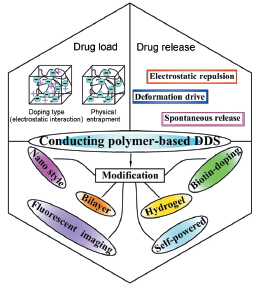 PDF(2701 KB)
PDF(2701 KB)


 PDF(2701 KB)
PDF(2701 KB)
 PDF(2701 KB)
PDF(2701 KB)
导电聚合物在药物可控释放领域的应用
 ({{custom_author.role_cn}}), {{javascript:window.custom_author_cn_index++;}}
({{custom_author.role_cn}}), {{javascript:window.custom_author_cn_index++;}}Application of Conducting Polymers in Controlled Drug Delivery System
 ({{custom_author.role_en}}), {{javascript:window.custom_author_en_index++;}}
({{custom_author.role_en}}), {{javascript:window.custom_author_en_index++;}}
| {{custom_ref.label}} |
{{custom_citation.content}}
{{custom_citation.annotation}}
|
/
| 〈 |
|
〉 |